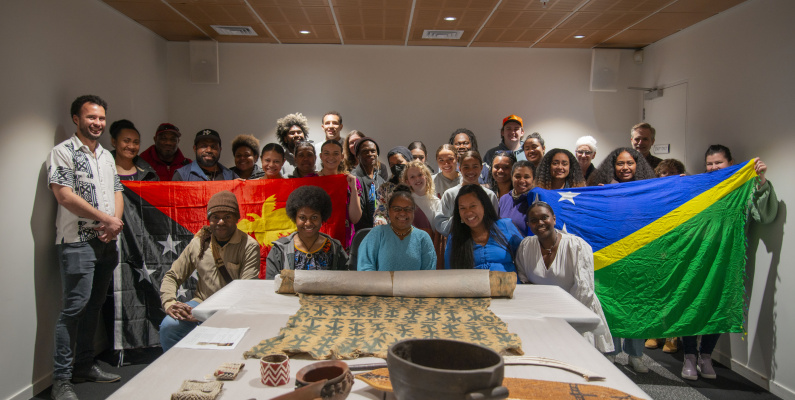
Figure 1: Dunedin Wantok Community with members of staff from Tūhura and University of Otago Archaeology Programme on the day of the private viewing.
For many Pacific communities, museums are not always considered as gathering places to share knowledge. On Saturday 2nd September 2023, this perception changed for Dunedin’s Wantok Community who were given, for the first time, a private viewing of Melanesian artefacts and an opportunity to share food and tok stori (‘share stories and converse’) at Tūhura Otago Museum.
‘Wantok’ is a Melanesian pidgin word meaning ‘speaker of the same language’, referring to pidgin (creole) languages commonly spoken in Papua New Guinea, Solomon Islands and Vanuatu. The community is one of the smaller Pacific Island communities in Ōtepoti and is made up of long residing Melanesian residents who now call Dunedin home as well as international and domestic students studying at the University of Otago or at Mainland Air.
Figure 2: Bark cloth belt from Gulf Province, Papua New Guinea, which was one of the many items displayed.
The event was hosted in partnership with Dr Charles Radclyffe, a Solomon Islander member of the community and archaeology lecturer at the University of Otago, Friends of Tūhura Otago Museum, who generously sponsored catering for the day, and Otago Melanesian Islands Student Association (OMISA). For many of the attendees, especially young members of OMISA, it was their first time to visit the museum.
Vitally, the event gave a special opportunity for the community members to connect with and, especially for the younger generation most of whom were born in New Zealand, to learn about their traditional heritage and the rich Melanesian collections held at the museum.
Feedback and comments from community members who attended were largely positive as some of the OMISA members shared:
"I felt a deep spiritual connection at the viewing; the archaeological artefacts helped me to connect with my ancestors like never before. An experience like no other. Thank you for this opportunity!"
OMISA member
"I thoroughly enjoyed attending the private viewing… The museum staff along with Charles Radclyffe put in an outstanding effort to show us the collections they had. This viewing was educational, interesting and a sense of community and belonging shifted through the atmosphere. My highlight was learning about these precious artefacts and connecting with other Melanesian people. I hope in the future we will be able to display these collections for public viewing to share our beautiful cultures with other people."
Michelle Thial, Vanuatu.
"Really enjoyed it, loved that the Dunedin Melanesian community could meet and greet in our own space and share/tok stori about the artefacts."
Elsie Polosovai, Solomon Islands, OMISA 2023 Vice President.
To the joy of the museum staff, the event provided a valuable opportunity to engage in sharing and exchanging their curatorial knowledge with the indigenous knowledge of the community members. For several of the objects lacking contextual information, some of the older and more knowledgeable community members were able to give indigenous language names, confirm materials used to make them and narrow down their original place of manufacture to particular islands. Archaeological insights were also given by Radclyffe’s colleagues from the Archaeology Programme, Anne Ford, Tim Thomas and Glenn Summerhayes who were in attendance with members of their families.
While Tūhura already exhibits a wide array of its world-class Melanesian collection in its Pacific Cultures Gallery, the private viewing of unlabelled objects provided a unique experience for the community members to formulate their own independent and collective understandings of the objects. With no accompanying plaques to read from, attendees contributed their own memories, stories, artistic or cultural knowledge and personal opinions about the life histories of the objects. For some of the younger attendees, ‘old-looking’ traditional objects gain renewed relevance as they were encouraged to reflect on what the objects mean to them now.
Crucially, these experiences challenge the common but narrow perception that museums are places you go to learn stuff, and not where you can contribute your own knowledge. Museum staff cherish opportunities when the role of educator can be reversed, and a culturally safe space be created for indigenous knowledge and perspectives to be shared respectfully and reciprocally.

Figure 3 Community members from Solomon Islands discussing their thoughts on the origins of some of the items. Left to right: Geoff Rahari, Joy Breward, Mariagoretti Heu, Corinne Hundleby and Charles Radclyffe.
Radclyffe was inspired to organise the event following his involvement in coordinating similar private community visits to museum collections held in Brisbane at the Queensland Museum in 2021, and in Canberra in 2022 at the School of Archaeology and Anthropology Collections, Australian National University. The latter involved the Solomon Islands High Commissioner and his office, based in Canberra, viewing one of the richest collections of Sir Raymond Firth and James Spillius’ 1950s ethnographic expeditions to Tikopia (see Radclyffe’s descriptions of Tikopian headrests,
https://archanthcollections.anu.edu.au/urunga/).
Similar to these earlier events, the community viewing at Tūhura took advantage of the unique role museum collections can play in strengthening communal identity, promoting cross-cultural learning, and relinking Pasifika diaspora residing overseas with their ancestral and cultural roots. Radclyffe and the Dunedin Wantok Community aspire to continue building upon this frensip (‘friendship’) with Tūhura Otago Museum into the future.
Photographs Credit: Max Levitt-Campbell
Acknowledgements: Moira White, Anne Harlow, Jen Copedo, Shannah Rhynard-Geil and wider Tūhura Otago Museum staff
Written by: Dr Charles J. T. Radclyffe ([email protected])
